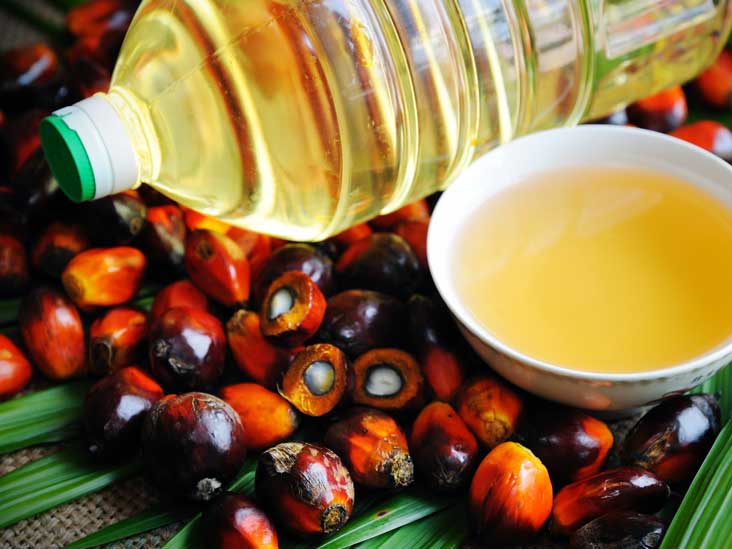
Palm Oil
There are several types of palm oil based on their physical and chemical properties, as well as the methods of extraction and refining.
Crude palm oil
Crude palm oil (CPO) is extracted from the fleshy mesocarp of the oil palm fruit through mechanical or hydraulic means. It has a reddish-orange color and a strong, pungent smell due to the high level of carotenoids and other pigments present. CPO contains a high level of saturated and unsaturated fatty acids, as well as various other nutrients such as vitamin E and phytosterols.
Refined, bleached, and deodorized (RBD) palm oil
Refined, bleached, and deodorized (RBD) palm oil is produced by refining CPO through a series of chemical processes to remove impurities, bleaching to remove color, and deodorizing to remove the strong smell. The resulting oil is pale yellow in color and has a bland taste and smell. It is commonly used in the food industry as a cooking oil and in the production of margarine, shortening, and non-dairy creamers.
Palm kernel oil
Palm kernel oil (PKO) is extracted from the seed or kernel of the oil palm fruit, which has a higher fat content compared to the fleshy mesocarp. PKO has a higher level of saturated fatty acids and a lower level of unsaturated fatty acids compared to CPO. It is commonly used in the production of soaps, detergents, and other personal care products.
Red palm oil
Red palm oil (RPO) is made by cold-pressing the fleshy mesocarp of the oil palm fruit without the use of heat or chemicals. It retains the red color and strong smell of CPO, as well as a higher level of antioxidants and other nutrients. RPO is often used as a cooking oil and in the production of health supplements.
Fractionated palm oil
Fractionated palm oil is produced by separating the different fatty acid components of CPO through a process called fractionation. The resulting oil has a specific fatty acid profile and can be used in the production of specialized products such as cosmetic oils and lubricants.
